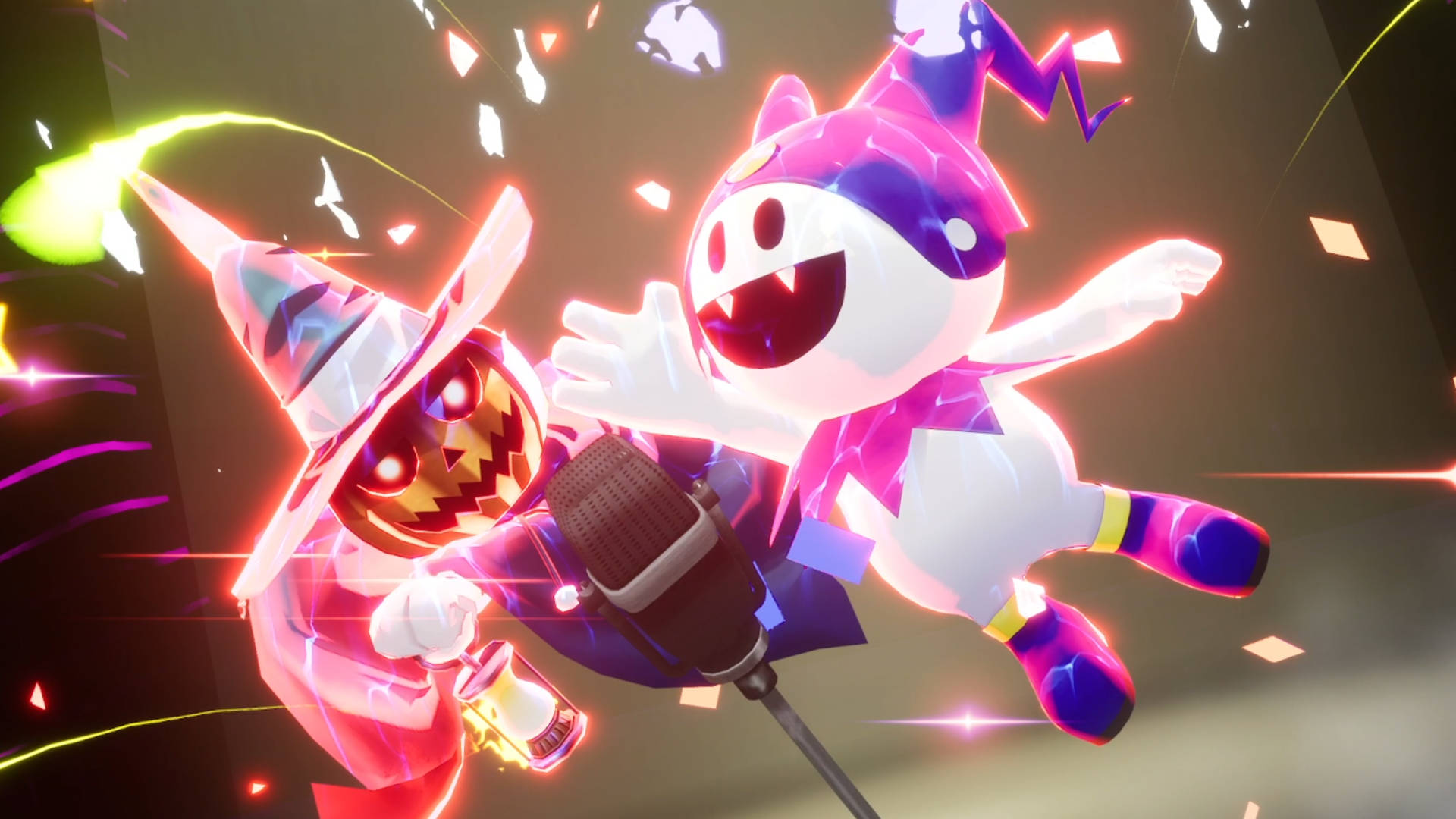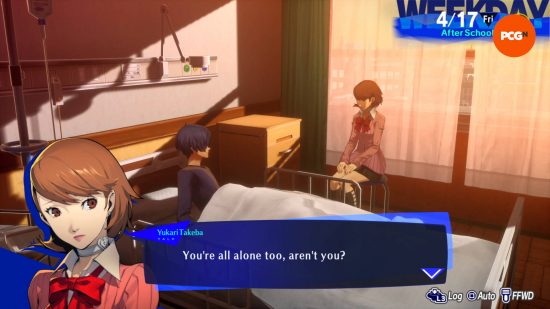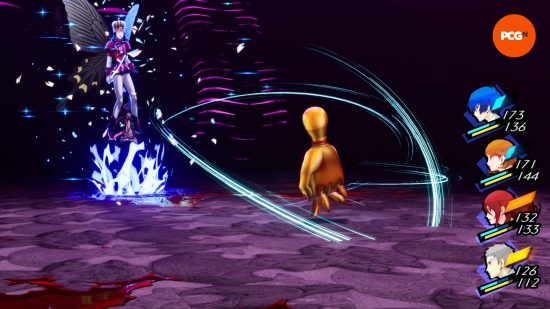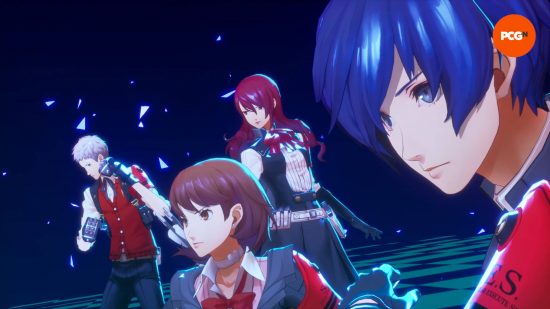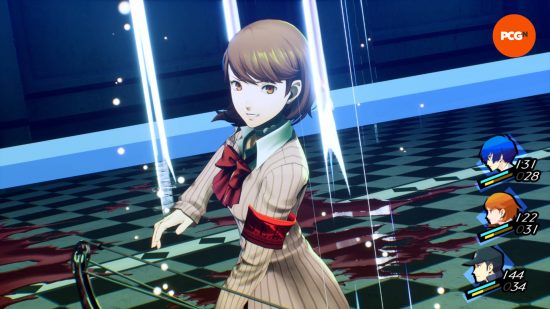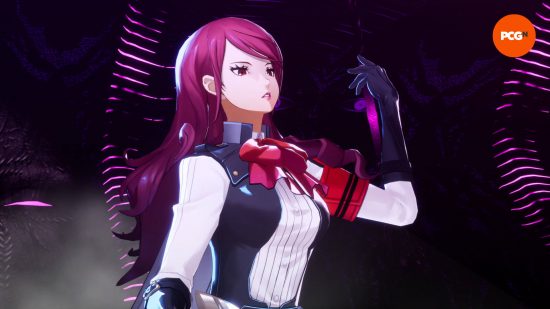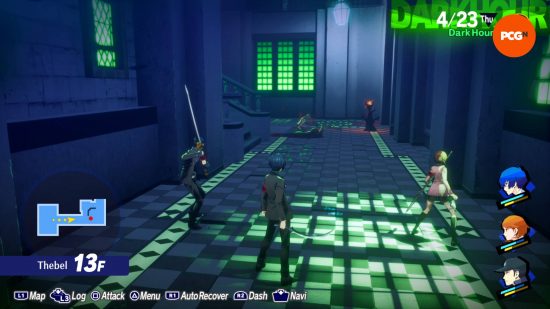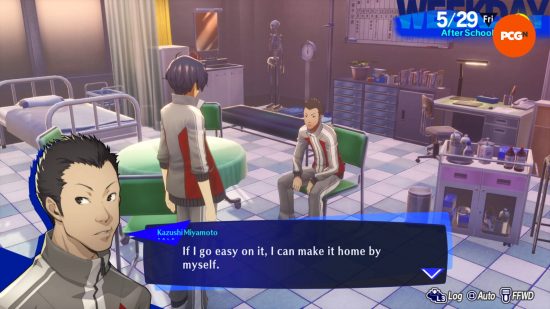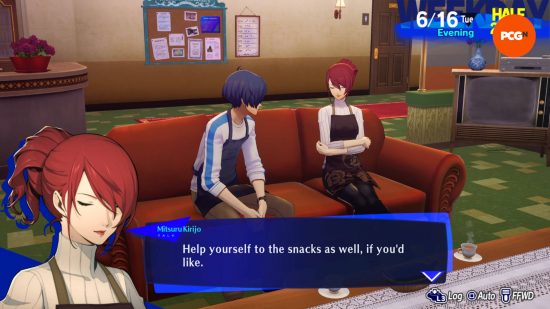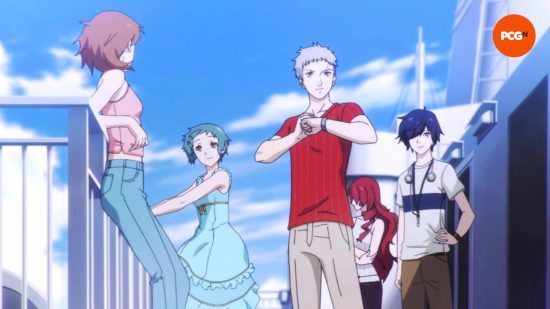Our Verdict
Whether you’re a new player experiencing it for the first time or a veteran on your latest playthrough, Persona 3 Reload is the best way to play the classic JRPG, even if it’s missing some key content.
When Persona 3 Reload was first announced, I remembered that fateful day when a friend lent me his copy of Persona 3 FES. Even for a fan of JRPGs, this was, at the time, a niche series, and I had no idea what to expect. Soon, I found a world where high school students fight demons in a never-ending labyrinth, all while juggling friendships and studying for exams. It soon reeled me in, fast becoming one of my favorite RPGs. I’ve played other versions since, but none truly brought me back to that first time. I’m happy to report that Persona 3 Reload captures the magic while adding clever new mechanics to streamline the experience.
On your way to the Gekkokan High School dorm rooms in the city of Iwatodai, the protagonist endures a phenomenon known as the Dark Hour, an extra hour in the day when those exposed to it are at risk of being attacked by Shadows. Upon arriving at the dorms during this hour, the residents, members of an anti-Shadow group known as SEES, keep a close eye on him until one night when a large Shadow appears at the dorm. The protagonist soon becomes a SEES member after using an Evoker to awaken his Persona, the spirit of the one summoning it. It’s up to them to repel invading Shadows and explore a mysterious structure that appears every Dark Hour at the school.
When I first played Persona 3 FES, I was impressed by the writing and localization quality. Early friends Junpei Iori and Yukari Takeba fit into the typical comedic/straight-person dynamic, where one is unimpressed with the other’s antics. Yet, both are conflicted individuals struggling with their own issues, such as Iori’s inferiority complex and Takeba’s family history. As SEES grows with new members, they have less time to make an impression, but they’re all well-written characters with their demons to contend with. Reload’s script changes are thankfully being fairly light touch, and I couldn’t be happier about that; it’s the one area I hoped wouldn’t see many changes as the characterization was what made the original game so special.
One area where Reload drastically improves the game’s overall presentation is the visuals; by adopting Persona 5’s character model style and a flashy UI, this is the best Persona 3 has ever looked. Gone is the point-and-click exploration from Persona 3 Portable. Character portraits no longer have slightly unsettling proportions. I can fully explore every crevice of Iwatodai, just as I did back when I first played FES. I also dig the new recordings of the smooth, jazzy soundtrack, and these additional tracks match the vibe wonderfully.
The core gameplay loop is similar to other Persona games in that the calendar year has story-based events appearing roughly once an in-game month. Compared to future games in the series, these events are less involved for the most part, and while the story is overall a more grounded experience with fewer anime tropes than its sequels, there’s a valid argument that it proceeds at a snail’s pace. The first couple of hours, in particular, are still painfully sluggish, but I’d say they are worth persevering through.
Like the original, I spent the bulk of my time in Persona 3 Reload exploring the semi-randomized labyrinthine dungeon known as Tartarus. Scaling each floor, this is predominantly a turn-based RPG game, where you fight Shadows by using skills from each party member’s Persona to exploit weaknesses, essentially the same deal as most Shin Megami Tensei games. Persona 3 was where All Out Attacks came from, where the entire party dogpiles the enemy for a vast amount of damage, and it’s just as satisfying in the remake.
While the rest of your party has one Persona, the protagonist can carry multiple Personas at once and switch between them, changing the available skills and his strengths/weaknesses. He can access new Personas by collecting them through cards won after battles or by combining them into more powerful forms via the Velvet Room, which has only minor changes in Reload. It’s a tried and tested formula that still works well here, nearly 20 years later.
However, there was always room for improvement in the original, and this is where Reload’s changes shine. In Persona 3’s first iteration, you had no direct control over your allies, but with each new version, subsequent tweaks modernized things. It comes as no surprise then that Persona 3 Reload is the easiest version to pick and play yet – largely thanks to its efficient use of your team’s arsenal.
Chief among these improvements is the Shift mechanic, which you can use after you land a super-effective or critical hit. This allows you to swap to another teammate for them to use their skills to land additional powerful hits, making All Out Attacks more likely and ending battles quicker. It means a more even spread of SP usage, allowing you to venture further into Tartarus without needing a break. Your navigator can also suggest attacks against targets or characters to Shift to exploit weaknesses. In previous versions, I rinsed through SP healing items to keep the protagonist healthy, which was an unnecessary frustration.
The SEES chief navigator, Fuuka Yamagishi, also has many new abilities inside and out of combat. She can still scan for enemy weaknesses, but you can now use her SP outside of combat to perform special skills, such as making it trickier for enemies to spot you or buffing your party before entering combat. I always thought the navigator was an afterthought in previous versions, so giving her more to do makes her inclusion worthwhile.
Fuuka, as well as the rest of your team, also have ‘Theurgy’ skills. You can get closer to activating these chargeable attacks by fulfilling unique criteria for each party member, such as Mitsuru inflicting status ailments on foes or Yukari healing the team. These Theurgy skills are exclusive to each character: Akihiko’s got an electric attack that hits all enemies while ignoring their resistance. Aigis enters an enhanced state that increases the potency of her attacks for a short time. Even support characters get them, as Fuuka’s Oracle Theurgy skill gives a random buff to the team, such as instantly recovering half the team’s SP or buffing attack, defense, and accuracy/evasion all at once.
Some characters even get access to multiple Theurgy skills, including the protagonist, who can learn new Theurgy attacks by having certain Personas in his roster at any time: Jack Frost and Jack O’Lantern give him the Jack Brothers Theurgy skill that has them perform an adorable, heavy-damage comedy routine. Overall, I love these Limit Break-style skills as they bring back fond memories of playing Final Fantasy VII for the first time, and they’re handy in taking down more demanding bosses with few weaknesses.
The other notable change in Tartarus is in exploration. Each floor always had a gimmick, such as a rare chest to find or an enemy that rewards tons of experience points. Money was always hard to come by, but the new spires you can smash have a chance of dropping sellable or HP/SP recovery items. You can also collect fragments by shattering spires with blue lights inside Tartarus, rescuing certain Iwatodai citizens who stumble into the dungeon, exploring the town, or talking to the Velvet Room’s attendant, Margaret. You can use these to open locked chests for rare items or instantly heal all party members’ SP.
Outside of Tartarus, the other core pillar of Persona 3 is school life. As a student, you must manage your studies and answer classroom questions to improve your social skills and do well in your exams. You must also develop relationships with friends to get bonuses when combining Personas at the Velvet Room. We’re now three full games into the Social Link mechanic, and the scenarios have grown increasingly elaborate with each evolution, even if the changes in Reload are largely superficial.
One helpful addition is a new and efficient way to buff your social stats (academics, charm, and courage). By meeting social stat criteria, you can unlock the opportunity to consume more expensive and exclusive dishes at one of the three restaurants. As soon as these became available on the menu, I proceeded to gorge myself. While the buffs these meals provide are annoyingly vague, I did maximize all three within a few in-game months, which makes completing all social links a lot easier. You can also see what other players did during each day, which is a lovely touch.
Another significant change comes later in the year when the Antique Shop opens. In previous versions, you could trade in Persona cards and unlock enhanced, rare weapons and armor. In Reload, this now requires jewels and other rare items, some of which had me venture into the Monad Doors that eventually appear in Tartarus. These mini-dungeons have some trickier enemies to defeat, but the rewards are worth the challenge.
You can also now interact with your roommates during the evening, including watching a movie, communal reading, cooking dishes, or tending to plants. These interactions eventually give you additional characteristics when using the new Theurgy skills, such as Akihiko increasing the effects of buffs on himself after he uses his Lightning Spike attack. It gives me something to do in the evenings after efficiently maximizing the social stats. It has a tangible effect on the other party members’ abilities, which is another smart addition.
It may sound like I’m waxing lyrical about just about everything here, but Persona 3 Reload isn’t perfect. With all these tweaks and new mechanics, it’s time to talk about the lingering elephants in the room: FES and Portable. These were updated game versions that delivered tweaks and improvements, but the fundamental marquee features were the multi-hour new scenarios, such as an epilogue story or an entirely different campaign with a fresh protagonist. The sad truth is that neither of these is present at launch, and if they’re coming at all, it will be as DLC. The FES epilogue ‘The Answer’ has more of a chance of appearing as it’s a short story in a Tartarus-like dungeon. Still, I don’t see it happening for the inclusion of Portable’s female protagonist and all her unique social links/interactions.
Persona 3 Reload is, by far, the most feature-rich version of one of the best JRPGs ever made. Intelligent changes to core mechanics make traversing Tartarus less of a chore. At the same time, additional facilities speed up tedious increases to social skills while adding new interactions to buff your party members. It’s a great remake, but that comes with the asterisk of not including the epilogue or alternative scenario that older versions did, which leaves a bitter taste for a long-term fan. Beyond that, though, I thoroughly enjoyed reliving memories with Persona 3 Reload and think it’s now the best way to get into one of my favorite JRPGs.

